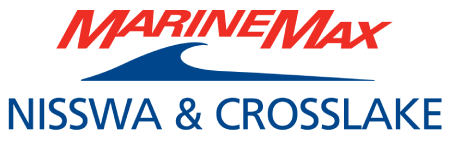A Guide to ABYC Corrosion Prevention Standards For Your Boat
 Boat ownership requires some measure of responsibility on the part of the owner because it’s important to keep your boat in good condition if you want it to run well on the water. One of the most concerning issues is corrosion, because it can spread quickly and destroy more than one part of your craft. If left unaddressed, corrosion can become irreversible.
Boat ownership requires some measure of responsibility on the part of the owner because it’s important to keep your boat in good condition if you want it to run well on the water. One of the most concerning issues is corrosion, because it can spread quickly and destroy more than one part of your craft. If left unaddressed, corrosion can become irreversible.
The American Boat and Yacht Council (ABYC) has created several essential standards for boat construction, which means they’ve addressed the issue of corrosion and how to prevent it. Want to know more? Nisswa Marine is your Minnesota boat dealer.
We’ve been on the shores of Nisswa Lake since the 1930s so we know a thing or two about corrosion prevention ourselves. Read on to learn what the ABYC recommends when it comes to preventing corrosion on your craft.
The Science Behind Corrosion
Before you do anything, it may help to understand exactly what we mean when we say “corrosion.” In this case, we’re referring to galvanic corrosion, which involves two metals that have dissimilar electrical potentials due to variances in their atomic makeup.
When these two metals come into contact with an electrolyte pool, a positive and negative charge is created between the metals, which creates a battery. The negatively charged metal becomes the cathode and the positively charged metal becomes the anode.
The cathodic material draws electrons away from the anode, and this breaks the anode down as it loses valuable particles. And that, in a nutshell, is corrosion.
The noble metals on the periodic table (remember that big chart of elements from chemistry class?) are most resistant to corrosion, so they’re often the cathodes. Less noble metals become anodes.
Remember: corrosion and oxidation are not the same thing! Oxidation occurs over many decades and is often harlmes, aside from being unsightly. Galvanic corrosion is quick to spread by comparison.
Where Will Corrosion Occur?
Corrosion generally occurs on your boat if steel and bronze or steel and aluminum come into contact with saltwater. These parts might be the propeller or the mast. Corrosion can also occur even in brackish (somewhat salty) water or freshwater.
ABYC Standards
The ABYC requires boat manufacturers to follow several standards to protect their crafts from corrosion. In order to get a boat certified by the National Marine Manufacturers Association (NMMA), a manufacturer must take steps to reduce the risk of corrosion on their crafts. But corrosion will still be a problem in certain situations.
Sacrificial Anodes
As a boat owner, you can take steps to control when galvanic corrosion occurs. You’ll need sacrificial anodes that can draw the corrosion process to a different material that isn’t a crucial component of your boat.
Sacrificial anode materials were traditionally made from zinc, but aluminum and magnesium have become more popular in recent years because zinc oxidizes in freshwater conditions.
What You Need
You’ll want to have a multimeter on hand to help you determine your hull’s potential before choosing an anode material. Use ABYC standards to determine how much you need to offset to prevent corrosion based on the voltage reading. Remember that sacrificial anodes by nature will break down over time and will need to be replaced, so make sure to check their condition often.
Need some more assistance? You can always get in touch with the service department here at Nisswa Marine to talk to our technicians about corrosion prevention. If you need a boat, browse our website to see our vast array of new and used boats for sale at our Nisswa, MN, dealership location. You can also talk to our staff about our financing and trade-in options to fund your purchase, or ask about our boat storage and winterization options to keep your boat safe over the winter. Nisswa Marine proudly serves the greater Minneapolis metro area as well as nearby St. Cloud, MN.
